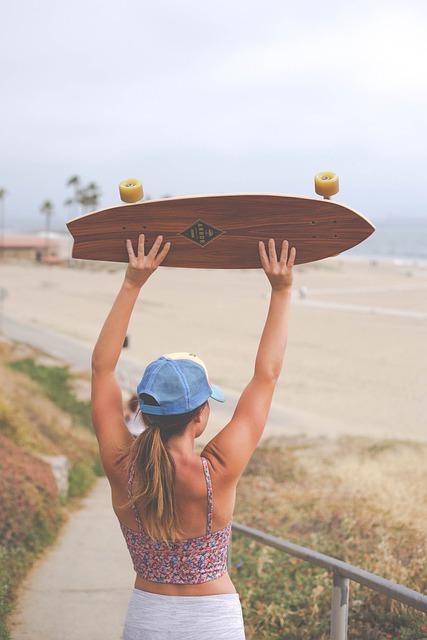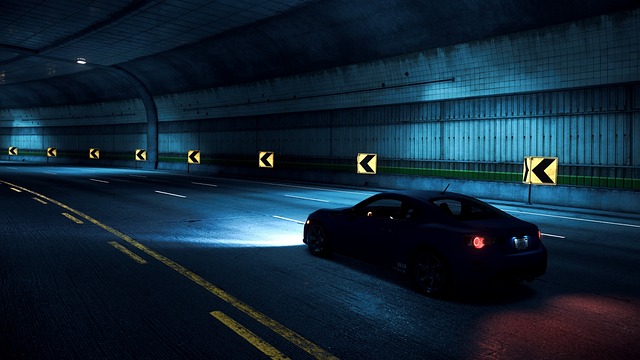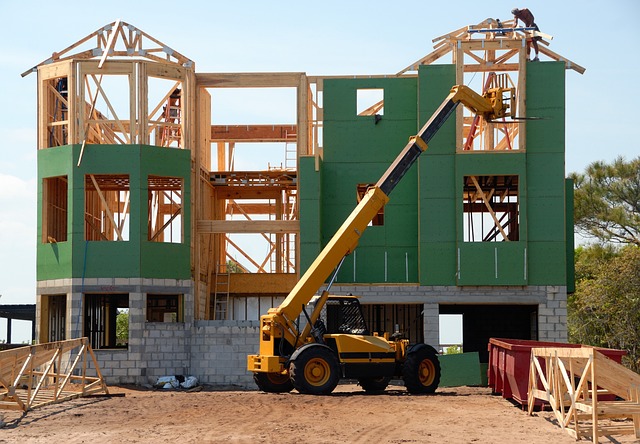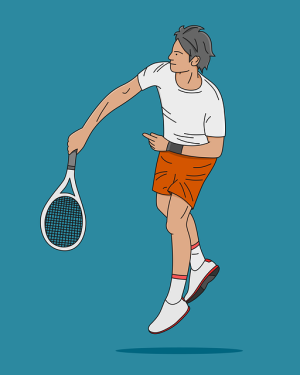For longboard novices, choosing the right wheels is crucial for an enhanced riding experience. Key considerations include durometers (hardness levels) and wheel size, which significantly impact performance and terrain adaptability. Beginners should opt for versatile 70-85A durometer wheels offering a balance between speed and control. Larger wheels (70mm-100mm) provide smoother rides and better bump absorption, ideal for rough terrain. Soft wheels (70-85A) enhance turning ease and grip, perfect for learning techniques on various surfaces. Regular wheel maintenance is essential; cleaning, inspecting, and replacing wheels every 300-500 miles ensures optimal performance and safety for beginners.
Introducing our comprehensive guide designed specifically for longboard enthusiasts—or those new to this exciting sport. We explore the intricate world of longboard wheels, focusing on a key aspect often overlooked: size and hardness. From understanding wheel fundamentals to unlocking the benefits of larger, softer wheels for novice riders, this article covers it all. Discover how these wheels enhance ride quality, navigate different terrains, and even master advanced techniques. Whether you’re just starting your longboarding journey or looking to refine your skills, we’ve got you covered with practical insights and expert tips tailored for a better boarding experience.
Understanding Longboard Wheels: A Beginner's Guide

For the longboard novice, understanding the various components that make up your board is key to enhancing your riding experience. One of these essential elements is the wheel—a seemingly simple part but one that significantly impacts your cruising capabilities. Longboard wheels come in a variety of sizes and durometers (hardness levels), each suited for different styles and terrains.
Beginners typically want versatile wheels that offer a balance between speed and control. A common recommendation is to start with 70-85A durometer wheels, which provide good pop (a burst of speed) while still offering some give when navigating cracks and rough surfaces. For those new to longboarding, softer wheels can be more forgiving, allowing for easier turns and a smoother ride, but they may require more maintenance as they wear down faster.
The Role of Wheel Size in Longboarding Experience

When it comes to longboarding, wheel size plays a pivotal role in shaping the overall experience, especially for beginners. Larger wheels, typically ranging from 70mm to 100mm in diameter, offer several advantages. They provide smoother rides and better absorption of bumps, making them ideal for navigating rough surfaces and ensuring a more comfortable journey. This feature is particularly beneficial for those new to longboarding, as it reduces the learning curve associated with handling obstacles and irregular terrain.
For beginners, softer wheels (with lower durometers, around 70-85A) further enhance the experience. They offer increased flexibility, allowing for easier turning and a more forgiving ride. Soft wheels can also improve grip on various surfaces, enabling beginners to carve and maneuver with greater control and confidence. This setup is perfect for exploring different longboarding techniques and styles, providing a fun and accessible entry point into the world of longboards.
Advantages of Larger Wheels for New Riders

For new riders looking to master the art of longboarding, larger wheels offer a range of advantages that can significantly enhance their learning experience. These bigger wheels provide stability and make it easier for beginners to maintain balance, especially at higher speeds. This is particularly beneficial when navigating turns or cruising down hills, as the increased surface area allows for better grip and control.
Additionally, longboard wheels with larger diameters are designed to absorb shocks more effectively, resulting in a smoother ride. This feature comes in handy on uneven surfaces, reducing the risk of wobbles and falls that can discourage new riders. By offering both stability and comfort, these wheels empower beginners to focus on learning techniques without being hindered by wheel performance issues, making their transition to longboarding much easier and more enjoyable.
Choosing the Right Wheel Hardness for Your Style

When selecting wheels for your longboard, especially as a beginner, understanding wheel hardness is key to enhancing your riding experience. Softer wheels, typically with lower durometers (around 70A-85A), offer smoother rides and excellent traction, making them ideal for beginners navigating rough surfaces or exploring urban environments. This flexibility absorbs shocks, providing better control over your board during turns and making it easier to maintain balance.
However, as you progress from a longboard beginner to an intermediate rider, you may prefer harder wheels (85A-95A). These wheels offer increased durability and speed, which is crucial for carving at higher velocities or navigating technical terrain. Harder wheels provide a smoother ride on smooth surfaces, allowing for quicker turns and more responsive handling—perfect for advanced longboarding styles like dancing or freestyle tricks.
Soft Wheels and Their Impact on Ride Quality

Soft wheels, a feature often sought after by longboard for beginners and experienced riders alike, significantly influence ride quality. These wheels are designed with a softer compound compared to their harder counterparts, offering several advantages. The primary benefit is enhanced comfort during rides, as the soft material absorbs road imperfections more effectively, reducing the transmission of jolts and bumps to the rider’s hands and body. This makes them ideal for navigating rough urban landscapes or cruising along winding paths without feeling every imperfection.
Moreover, soft wheels provide better traction on various surfaces, especially in wet conditions. The increased grip allows riders to maintain control more easily, making them suitable for beginners learning to turn and stop. While they may have slightly lower speed potential than hard wheels, the trade-off in terms of a smoother, more enjoyable ride experience is significant, especially for those who prioritize comfort over top speeds.
Common Misconceptions About Longboard Wheel Sizes

Many first-time longboarders often have questions about wheel sizes, especially when choosing a longboard for beginners. There’s a common misconception that larger wheels are always better, but this isn’t entirely true. It’s essential to understand that different wheel sizes cater to various riding styles and terrain types.
For instance, bigger wheels, usually 70mm or more, are great for cruising and providing a smoother ride on concrete surfaces due to their higher flotation. However, they might be less ideal for tight turns and maneuverability. In contrast, smaller wheels, typically below 65mm, offer better agility and quicker response times, making them perfect for technical street skating or performing tricks, but they can feel rougher on uneven roads. Longboard for beginners should consider their primary riding goals to select the most suitable wheel size.
Tips for Maintaining and Replacing Longboard Wheels

Maintaining your longboard wheels is crucial for a smooth and enjoyable riding experience, especially if you’re new to the sport (longboard for beginners). Regular cleaning and inspection are key; use a soft cloth to wipe down the wheels after each ride to remove dirt and debris. Check for any signs of wear or damage, such as cracks or delaminations, which could affect performance and safety.
When it comes to replacing wheels, consider the type of riding you do most often. Different longboard styles require distinct wheel sizes and durometers (hardness). For beginners, a versatile setup with medium durometer wheels offers a balance between speed and control. Regularly replace wheels when they show significant wear, usually every 300-500 miles, to ensure optimal performance and prevent accidents on your longboard.
Real-World Applications: When to Opt for Larger, Softer Wheels

Larger, softer wheels are a popular choice for longboard for beginners due to their versatility and comfort. In real-world applications, these wheels offer a smoother ride, especially on uneven surfaces like cracks in the pavement or rough sidewalks. This makes them ideal for casual cruising and exploring urban environments.
For beginners looking to navigate city streets or simply enjoy leisurely rides, larger, softer wheels provide an extra layer of stability and absorb more impact, reducing fatigue during longer sessions. They also allow for easier turning and maneuverability in tight spaces, making them a practical choice for those new to longboarding who want to focus on learning basic techniques and enjoying the experience without too much technical complexity.
Advanced Techniques and Tricks with Large Soft Wheels

For longboard beginners, large soft wheels can be a game-changer. These wheels offer a smoother and more comfortable ride compared to their harder counterparts, making them ideal for navigating city streets or cruising through parks. One advanced trick to master is carving, where you use your body weight to create flowing turns, similar to surfing waves. Larger soft wheels provide better stability during these turns, allowing beginners to build confidence and improve their balance.
Additionally, large soft wheels excel at absorbing bumps and vibrations from the road surface, reducing strain on your body. This makes them perfect for longer rides or when covering varied terrain. Beginners can also experiment with different wheel bases to customize their longboard’s handling. A wider base provides more stability but may require more effort to turn, while a narrower base offers better maneuverability at the cost of initial stability.
